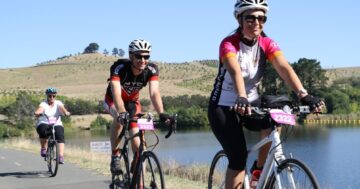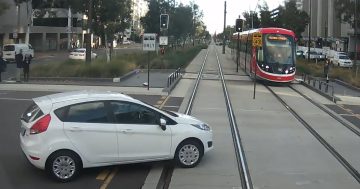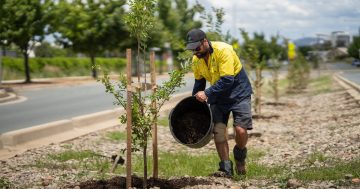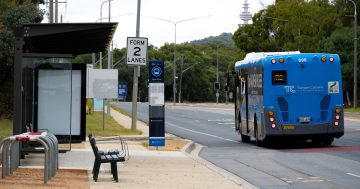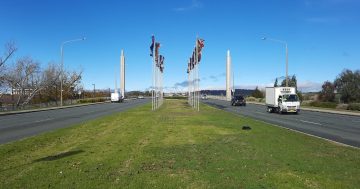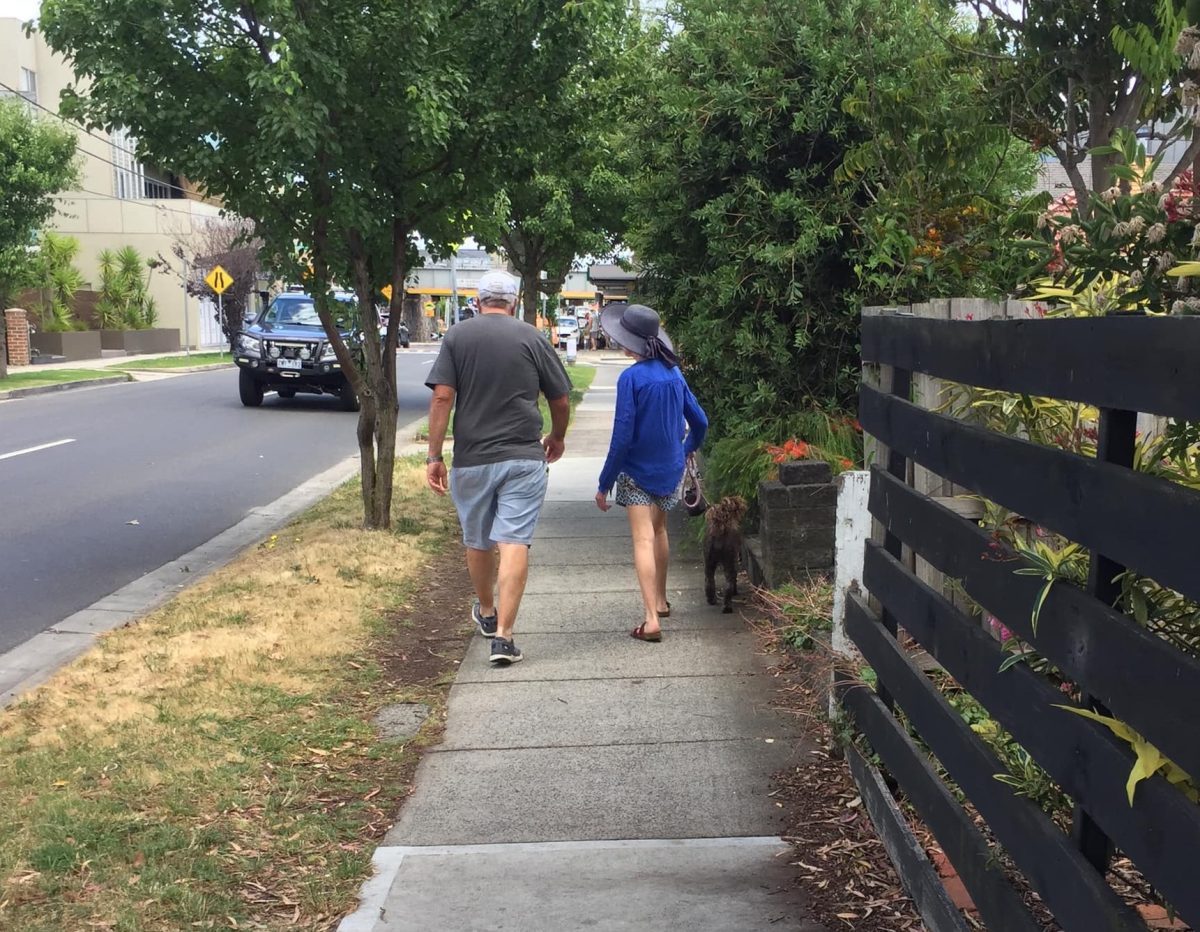
US website Walk Score ranked Canberra as Australia’s 10th most walkable large city, putting it behind Sydney, Melbourne, Adelaide, Perth, Newcastle, Wollongong, Gold Coast and Central Coast. Photo: Living Streets Canberra Facebook.
More people in the ACT are choosing to walk or take public transport, but Canberra remains one of Australia’s least walkable cities.
According to the latest Household Travel Survey, which looked at the travel and activities of 5100 people in the ACT and Queanbeyan, just under one in five (18.1 per cent) of trips were made by walking.
In comparison, in the previous survey conducted in 2017, walking made up approximately 13.6 per cent of all trips.
The proportion of trips made by car fell slightly from 77.6 per cent in 2017 to 74.7 per cent in 2022.
“While most activities currently rely on access by private vehicles, there is a willingness to use alternative methods,” the report concluded.
“For example, about one-fifth of trips involve ‘active transport’ modes (walking and cycling). These are typically used for local travel, or for shorter journeys once a primary destination (eg work) has been reached.”
The light rail is also helping Canberrans make the switch to using public transport. At the end of October, light rail reached a milestone of 15 million total passengers, and in the past three months alone 22 per cent of all public transport journeys across Canberra were on the light rail.
“It’s been a real win for Canberrans who live on the northside being able to skip the traffic on their way into work, the city or surrounding suburbs on the light rail line,” Transport Minister Chris Steel said.
For some suburbs, the impact has been particularly notable.
“The latest data shows that public transport mode share in Gungahlin has increased by nearly 50 per cent since the introduction of light rail. Private car usage has declined further with the highest drop recorded in Gungahlin and North Canberra, along the light rail alignment, reducing by nine per cent in Gungahlin, and 13 per cent in North Canberra,” Minister Steel said.
A recent survey also found that 51 per cent of passengers said they planned to continue their journey through the city using light rail stage 2A in future.
“Buses alone won’t deliver increased patronage on public transport, or the mass transit we need to move more people as our city grows. Light rail stage one has already shown it can provide these benefits to our city and it’s why we are extending the line to the southside,” Minister Steel said.
Canberra is notorious for its car dependency and it still lags behind other Australian capital cities in terms of its walkability.
US website Walk Score ranked Canberra Australia’s 10th most walkable large city, putting it behind Sydney, Melbourne, Adelaide, Perth, Newcastle, Wollongong, Gold Coast and Central Coast.
Its score of 40 was lower than any of the country’s other capitals.
Some suburbs are better than others, though: according to Walk Score, the most walkable suburbs in the ACT are Civic, Kingston, Barton, Reid and Braddon, whereas the least walkable suburbs are Isabella Plains, Casey, Banks, Crace and Harrison.
The 2023-24 ACT Budget has earmarked more than $26 million for improving Canberra’s walking and cycling infrastructure, including more than $5 million to improve and maintain the city’s footpath and cycle network.
The latest suite of the ACT Government’s Age Friendly Suburbs program was also announced earlier this year, which will focus on Chifley, Reid, Scullin and O’Connor.
However, some say while it’s great to see better quality pavements and paths in our city, the ACT Government’s approach to improving walkways is lacking.
Living Streets Canberra spokesperson Gillian King said the ACT Government needed to look at the city as a whole, rather than specific suburbs.
“What we need is a shift away from small, itty-bitty and often expensive piecemeal approaches,” Ms King said following the announcement.
“What we need are urgent and universal upgrades of our [path] infrastructure.”
Ms King argued there were many Canberra suburbs that didn’t have fit-for-purpose pathways, or pathways at all.
“The way the ACT has approached people walking and cycling in recent decades would not be tolerated by people who are driving,” she said.
“People need to have a choice and need to be able to get around without a car, either because they want to or because they’re unable to.
“[The ACT said] it wants to be Australia’s most walkable city … but is that still the case?”














